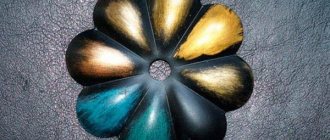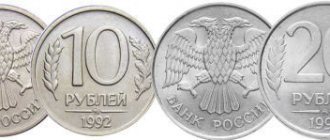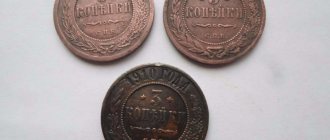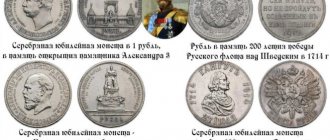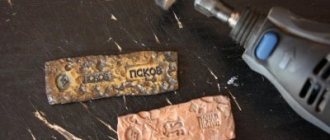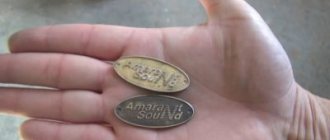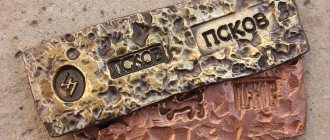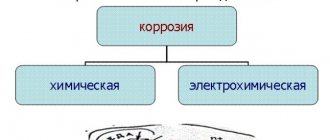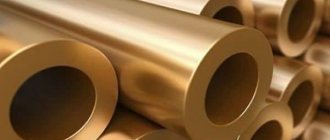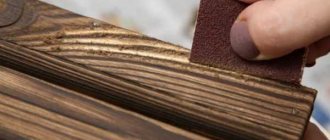The fabulous charm of the ancient cities of Europe is given not only by the exquisite ancient architecture, but also by the tops of the towers of an attractive green-blue color. This natural color of bronze is given by patina - a coating formed on copper, its alloys or other metals subject to oxidation. The bronze sheets that cover the domes and tops of the towers are initially dark brown in color. But after a few years, emerald islands begin to appear in the chocolate sea, which, growing, gradually hide the former color under a bright film.
The word “patina” comes to us from the Italian language, which inherited it from Latin, where patina is a small piece of utensils made of bronze. Oxidation processes create a patina consisting of many layers, but in conversations the word “patina” most often means only the top of them.
Not only dishes, but also coins were made from bronze. Therefore, people quickly became familiar with the patina on money. Patina is a natural and irreversible process. It can only be slowed down by preserving the item in an environment where oxidation will have an extremely gentle effect on it. That is why numismatists recommend storing coins in sealed capsules.
Types of patina
For collectors of modern anniversary items, patina is pure punishment. I almost forgot about the new bimetal or galvanized steel ten, and the stamped shine had already disappeared. Imperceptibly, the coin darkened and became dull. But patina sometimes transforms ancient coins for the better. Numismatists divide patina into several characteristic types:
- Natural – a layer of oxides on the surface of the coin;
- “Cabinet” – a smooth patina obtained by long-term storage of the coin in a wooden box or cabinet (a specialized cabinet for storing numismatic items);
- Rainbow – multi-colored patina;
- Bullet - a subtype of rainbow patina, when the colors change from light in the center to dark closer to the edge;
- Iridescent - a subtype of iridescent patina, when colors change depending on the viewing angle;
- Sandy - an even beige-yellow coating on coins that have been in the sand for a long time and exposed to silicic acid;
- Artificial - an induced layer to give the coin beauty and hide defects.
Above is a pair of royal coins that have begun to develop a natural patina. The first to change their shine to a matte color are the relief elements, which is especially noticeable on a penny. And, conversely, if the coin field is covered with patina, and the protruding elements look light (not patinated), then this is considered a defect called “cabinet wear.” A beautiful natural patina is highly prized and increases the value of the coin.
Artificial patina will be revealed by a thorough examination of the suspicious specimen. For example, it is clear that the patina lay over scratches and damage to the coin field or, on the contrary, did not cover its recesses. Unusual colors and shades of patina, as well as sharp transitions from color to color, should also raise suspicions. The yellow-brown smoky tint indicates that the patina was caused by tobacco smoke.
Artificial patina
Copy of a rare coin
The value of patina for antique coins leads to its artificial induction.
This may be necessary when cleaning if the coin has acquired an unnatural shine or color for its age. In addition, artificial patina can be used to hide defects (scratches, gouges, dents, “metal bloom”). Aging can also be used when making copies of rare coins; in almost all cases, they are easily recognized by small details, even if they have a beautiful artificial coating. Touch up. The most unprofessional method is used when making cheap copies of coins. You can distinguish it by its shine (real patina does not shine) or by a noticeable thick layer of dark substance. This patina is abruptly interrupted rather than smoothly disappearing towards the center. Even this method of aging can confuse a beginner, but for an experienced numismatist, one glance is enough to recognize a fake. Burning. This is also a short-sighted method, since even a less experienced collector can distinguish the burnt layer from the patina. They use a blowtorch, heat a gas stove over an open fire, place it in a fire, etc. Chemical methods. They come down to creating conditions under which the aging process is accelerated many times over. Many methods have been invented, here are just a few of them: - put 80 g of copper sulfate and 5 g of potassium permanganate per liter of distilled water, then heat the liquid strongly (but not to a boil) and place the coin for a few minutes;
- rub the coin with sulfur ointment and rinse with soap and water; - immersion in sulfuric acid or other sulfur solution. Sulfur has a strong effect on metal, causing rapid oxidation. They even use sulfur removed from matches. Traditional methods.
Here the imagination is limitless, but without developing experience, most likely, instead of aging, you will simply end up with a damaged coin. Coins are kept for a long time in an unfavorable environment (heat, moisture, fumes, aggressive liquids), baked inside potatoes, etc. Definition of artificial patina: - sharp changes in color, too much darkening towards the edges or in hard-to-reach places;
- shine of patina (real patina is matte and never shines); — the appearance of colors unusual for metal (for example, the reddish color of brass) indicates a chemical effect; — under an even layer of patina a scratch or gouge is discovered; — the presence of patina only at the highest points of the relief. Artificial patina never increases the value of a coin, and in most cases only decreases it.
Real patina has a unique antique feel that can never be replicated exactly. The exception is ways to accelerate natural oxides, but this still takes years. The article was corrected and supplemented by Admin, photographs were provided by site users: Andrey_P, Moneta100, 3715.
The article was last modified: 08/15/2017
Other articles
Patina on copper coins
Most often, collectors are faced with the destructive effect of patina on copper coins. Its color depends on the storage conditions of the specimen. The characteristic green color is given to the coin by sulfates and sulfides formed on the surface of the metal. Coins extracted from the ground have a coal-black tint - this is copper oxide that has affected its deep layers. Bright green-blue islands are also not pleasing to experienced collectors, since they can move from affected coins to others.
Collectors love a smooth, monochromatic patina that is pleasing to the eye, where minor defects in the coin field cannot spoil the overall impression. It is this kind of patina that is often called “cabinet” or “noble”. Such coins are valued much higher than motley or spotted ones.
The patina on copper coins is important when grading. Together with the assessment of the degree of preservation, the expert often confirms one or another shade of copper: “BN” (Brown), “RD” (Red) and “RB” (Red Brown). This parameter, fixed on the weak, can also affect the price of the coin.
How to Apply Patina to a Copper Coin: Tools and Methods
It has long been known that metals oxidize over time when exposed to atmospheric oxygen.
And if iron is destroyed as a result of this, then copper becomes covered with patina - an oxide-carbonate film that slows down the oxidation process. It is the patina that gives a special charm to an ancient coin, indirectly indicating its authenticity. Unfortunately, during the cleaning process, the natural patina must be removed along with the dirt. However, by patination of copper coins you can return them to the appearance of undisturbed antiquity.
Often, artificial patination of coins is justified from an aesthetic point of view, since it helps to retouch the results of their cleaning.
Basic Tools
There are many ways to apply patina to copper coins. With any patination method, basically the same set of tools is used. All you need to have on hand:
- glass or plastic container for preparing solutions;
- rinsing bath;
- spoon;
- beaker;
- table scales;
- glass and wooden sticks;
- brush;
- degreasing agent;
- latex gloves;
- respirator;
- laundry soap;
- sponge;
- rags;
- paper towels.
Before and after applying patina
Patina process
Undoubtedly, the presence of the “native” patina reliably protects the coin from damage. Ideally, it is better not to touch it at all. However, sometimes the removal of collectible assets is a necessary measure for the following reasons:
- due to the onset of corrosion;
- great pollution;
- strong unevenness of the patination layer.
In such cases, you have to resort to independent patination. In this regard, a reasonable question arises: how to apply artificial patina to a copper coin? The essence of this process is the effect of chemicals and compounds on copper.
The following methods are usually used for patination:
- dip coins into the patination solution;
- apply the solution to the surface with a brush;
- place a banknote in a vapor-gas environment.
The quality of the artificial oxide-carbonate film depends on the method of its preparation and on how well the base is prepared for it.
Preparing a coin for patina involves cleaning its surface from fat and oxides. It is easier to do this with a cotton pad soaked in white spirit or gasoline. These solvents will help clean it from greasy traces that impede the reaction of the patination solution with copper. From this point on, be sure to wear gloves, since the patina lies unevenly on fingerprints left behind.
Ways to create patina
In an aqueous solution of copper sulfate and potassium permanganate. To create a beautiful golden-brown patina, it is enough to dilute two teaspoons of copper sulfate and 1/3 teaspoon of potassium permanganate, commonly called potassium permanganate, in 200 g of water.
Heat the solution in a water bath, but do not boil. Dip the coin briefly into the solution several times until the desired color is obtained. Upon completion of patination, the banknote should be thoroughly rinsed under the tap and dried.
The dullness can be easily removed with a woolen cloth.
Patination of coins
Using ammonia. This method has two implementation options:
- Pour ammonia into a small container, for example, into a plastic bottle cap, place it in a plastic container along with the coin that needs to be aged, then close it hermetically and leave for a while. The result becomes noticeable after 1–1.5 hours.
- Secure the coin to any thin wire or thread. Place it in a glass jar with a small amount of ammonia so that it hangs above the ammonia. Take the end of the wire out of the jar, closing it with a lid. The reaction will begin very quickly, and changes will occur literally before our eyes. With the help of ammonia vapor, the desired effect will be achieved much faster than in the first option, within 10–15 minutes.
By the way! You should not resort to heating ammonia vapor, otherwise the patination result will be spoiled by the resulting condensate.
Sulfur ointment. In fact, this drug is intended to treat scabies, but it is often used to create a patina. It is worth noting that it is very effective in this regard, since it contains a lot of sulfur.
Contact of copper with sulfur results in the formation of copper sulfide. This compound quickly turns black and firmly covers the entire surface of the banknote. Therefore, to obtain a light brown patina you need to act a little differently.
It is better to apply just a little ointment to the pads of washed fingers, rubbing it over the surface in a thin layer. After this, do not touch the coin with sulfur fingers. Next, you need to pour hot water into the bath and put a coin, previously washed in citric acid, into it.
Then, with sulfur fingers, take it under water and begin to rub the ointment into its surface, without lifting it into the air. When you get the desired color, wash the coin with a Fairy brush without removing it from the water. As a rule, the resulting effect exceeds all expectations.
Whereas performing such manipulations directly in the air leads to the formation of an unattractive black patina, which also very quickly begins to fall off.
In a solution of copper oxychloride. Pour hot water into a half-liter jar. Dilute two tbsp in it. spoons of copper oxychloride (CHOM). This substance is easy to find in stores selling fertilizers. The result is a saturated blue-green solution. Add 100 ml of ammonia to it. From now on, it is better to work in a respirator so as not to feel the suffocating smell of ammonia.
A copper coin must be immersed in the prepared solution and left for 30 seconds. Then take it out and inspect it. This manipulation must be repeated several times until the desired effect is obtained. Finally, the coin should be washed in soapy and clean water, dried and admired for its beautiful brown-olive patina.
In general, if you forgot that this should not be done and washed off the natural patina, it can be restored.
Patina on coins made of copper alloys
Traditional tin bronze is close to copper in color. And since copper predominates in the alloy, the patina on bronze, despite the higher strength of the alloy, is similar to that formed on pure metal. As an example, we took a bronze coin from the late Roman Empire, on which bright inclusions of green-blue color are clearly visible. This is the formation of copper chloride (exposure to hydrochloric acid on the metal).
Soviet everyday coins of the older group of denominations (from 10 kopecks and above) were made from copper-nickel alloys cupronickel (until 1957 inclusive) and nickel silver (since 1961). Circular copies simply faded, becoming gray. If the coins fell into an aggressive environment (moisture or soil), the surface transformation process went faster. Copper plating of the coins occurred (copper protruding on the surface of the alloy), and the patina in appearance could resemble that formed on pure copper.
The junior group of denominations, from a kopeck to a nickel, was first minted from golden aluminum bronze and then from brass. Brass very quickly lost its original luster, darkening and tarnishing. The 1973 5 kopecks shown above show both an example that retains its stamp shine and a coin that has lost it.
From 2006 to 2014, Russian 10 and 50 kopeck coins were made from steel clad with tompak alloy (a type of brass). The coin shown above, although very dark, has acquired an unusual iridescent patina.
Patina on silver coins
Iridescent patina on silver coins can be found much more often than on copper. Previously, such a variety of colors could greatly increase the price, since such a specimen looked very advantageous against the background of ordinary coins, even if they had a stamp shine. Nowadays, there are many ways to create a rainbow patina. However, the artificial patina stands out with bright, unnatural colors that scare off experienced collectors and attract only beginners.
Let's look at the classic bullet patina. Its name comes from the similarity of the coin, which has such a patina, to one of the types of bullet targets. The coin field of the Soviet silver fifty-kopeck piece shown above contains smooth transitions of patina from light to dark tones, like on a target.
Tsarist and early Soviet bilon coins are 500-carat silver. The alloying additive to the precious metal is copper. Due to its presence, a thin layer of silver sulfide may form on the coin - a malachite-colored patina. It reduces, rather than increases, the price of the coin, so they are trying to remove it.
Patina on gold coins
Pure gold is a metal that is practically not subject to oxidation. This section appeared only because pure gold was not used for everyday coins of past centuries because of its softness. To give gold strength, it was alloyed with a small amount of other metals (usually silver and copper, less often nickel or molybdenum). The five-ruble note of Nicholas II, taken as an example, is 900-carat gold. The alloying additive to it is still the same copper. Under certain conditions, copper can appear on the surface, and even such a small amount will cause the coin to darken in fragments (as in the illustration above).
More often on gold you can find rust stains, caused by the same oxidation process. During minting, chipped microparticles of the stamp may become pressed into the surface of the gold, and after a few years the coin will become unsightly. In Russian numismatics, the most famous are the rusty gold “Victory Bearers”. After the scandal with SPMD gold coins, Russian minting technology was improved, and such defects began to occur much less frequently. Both rust and patina always reduce the value of gold coins.
Types of patina depending on the alloy
Different metals oxidize differently, which means the type and color of the age-related plaque that appears is different. This is determined not only by the parameters and shelf life, but also by the composition of the alloy, including all its impurities. For example, if the composition contains even a tiny fraction of iron, the patina will have a characteristic reddish tint. It is the impurities that cause the appearance of an oxidizing film on coins made of precious metals.
The patina on silver coins is usually due to an admixture of copper, and gold money discs would have no traces of oxides at all without the presence of impurities, since gold of the highest standard is usually used for coinage, and it is practically not subject to oxidation. However, on gold specimens one can often observe dots or slight stains of a darker color (even brown), which indicates the presence of copper.
The first sign of patina on silver coins is a slight yellow coating, then it turns crimson, turns blue-green and finally becomes dark gray or almost black.
Patina on copper coins
The leader in the formation of oxide film is copper. Copper oxide has a color close to black, but can sometimes be a lighter brown. The well-known green color of aged copper is formed by its sulfides and sulfates. If loose deposits with a greenish tint appear on the surface, it means that we are dealing with copper chloride, which behaves the worst and destroys the metal in a short time, leaving deep marks after cleaning (“bronze disease”).
In addition, sagging has to be dealt with if the coin is artificially aged. And finally, there is another type of patina on copper coins, which is called “malachite”. It looks noble and beautiful, has an amazing blue-green color and is a thin crystalline layer.
Modern metal money
As for modern samples, which are based on stainless steel or a copper-nickel compound, their surface oxidizes slowly and weakly, the color of the coating varies from gray to copper-golden. Aluminum wheels lose their shine and acquire a dull grayish coating. Brass coins deteriorate very quickly, beginning to darken or lose color and becoming almost white after just a few months. Good storage can, in certain cases, slow down this process. When brass alloy is exposed to chemicals, it turns red.
Another type of modern coins is steel plated with non-ferrous metals. The slightest damage to the coating, almost invisible to the eye, causes a violent oxidation process, as a result of which the entire applied film swells and the metal underneath rusts. It is very doubtful that such coins will ever be able to acquire a noble appearance in old age.
Patina on aluminum coins
Aluminum was often used in coinage in the 20th century. Basically, small denominations were made from it (for example, Hungarian fillers). In the GDR, the entire line of coins, with the exception of the heavy brass 20 pfennig used in the machines, was aluminum. The oxidation process quickly deprives the aluminum coin of its stamp shine. It becomes dull and inconspicuous, acquiring a matte gray coating. And if the protruding parts of the relief are still mechanically cleaned during circulation, then the coin field very soon begins to look dirty.
Patina on zinc coins
Zinc patinated coins have the most deplorable appearance. Shown above is a selection of small denominations from Denmark, the Netherlands and Luxembourg from the First and Second World Wars. In difficult times, metal becomes a strategic raw material, so coins have to be made from the cheapest material. Patina causes zinc coins to darken to such an extent that it is sometimes difficult to make out the designs and inscriptions on them. It is not surprising that after economic recovery, all these countries abandoned zinc coins, choosing other metals and alloys.
Do I need to remove the patina?
This question is often asked by beginners. There is no clear answer to this. As we have already found out, a beautiful, uniform patina gives antique coins a noble appearance, emphasizing their age and authenticity. The same applies to the iridescent patina, which does not hurt the eyes. But the black and purple sagging on silver coins (they are also called “horn silver”) greatly spoils the impression. The most difficult situation is with copper. If the patina goes deep, then during the cleaning process the coin risks turning into a thin circle or even falling apart. But even removing the surface layer often changes the specimen beyond recognition. Patina is part of the coin. Removing it leads to “blurring” of the relief. The field, which previously looked smooth, turns into a collection of holes and ruts. Cleaning copper will never return it to its original appearance, which is what many people hope for when undertaking this process. Experienced collectors recommend removing patina only in cases where it is guaranteed to improve the appearance of the coin.
Patina is not acceptable on Proof quality collectible coins. However, under incorrect storage conditions (without a capsule or in a damaged seal), both silver and copper-nickel gradually become covered with a whitish patina. Sometimes the patina can even change the color of the coin, turning it brown, yellow or beige. Cleaning “Proof” coins from patina is allowed only with the help of a specialized liquid without mechanical impact, otherwise the mirror field will be irrevocably damaged by micro-scratches.
What is patination and indications for the procedure
The word "patina" is an Italian term. They first learned about it after a chemical experiment was carried out, the reaction of which was the transformation of the surface of the coin. On a silver or copper alloy, a dark coating looks beautiful, but on aluminum it is a cloudy film, which is why such items lose value.
An important condition for patina is complete coverage of the metal, because... individual spots will not add charm to the coin. Therefore, the uneven coating is removed and applied artificially. But, if the oxide film has penetrated deep into the alloy, it is not recommended to touch it. After cleaning, such products will turn into thin plates with shapeless potholes instead of a pattern.
Patination of coins is carried out for several reasons:
- The specimen was purchased or found in poor condition, with traces of corrosion and in need of cleaning. The appearance of excavated cash samples largely depends on the area in which it was found and the quality of the soil;
- increase in cost. Ancient coins with a noble brown coating are much more valuable than coins with green spots on the surface;
- ignorance of the true value of a coin with natural traces of oxidation and the desire to make it shine leads to the loss of the product’s significance. Most often, the patina is worn off or the coin is thrown into acid, after which its color turns yellow-orange.
Patination of coins increases the value.
Patination is carried out through a chemical reaction, during which a film or coating is formed. Many years of practice have shown what methods exist for applying patina and how to perform the procedure at home. In the process, you need to maintain the proportions of the substances, otherwise you may lose your rare coin forever.
Patination of coins
Collectors who have started cleaning copper coins find that after removing the patina, the copper acquires an unpleasant reddish-scarlet tint. To give the coin a decent appearance, they resort to artificial patination. Conservative methods involve keeping the coin in oak boards, in sunlight or in the vicinity of sulfur, for example, in a jar with a scattering of matches. But craftsmen also know how to quickly create a patina using ammonia, ammonia, manganese and copper sulfate. The use of sulfur ointment has already become classic for copper coins. Coins are also burned and then covered with a layer of baby cream, but most collectors consider this method barbaric. Manufacturers of numismatics products, of course, have not left this niche empty, offering liquids for creating patina on various metals.
Each collector makes his own choice of which coins to choose for his exhibition: exclusively in stamped shine, cleared of patina or, conversely, only with its presence. And yet, if you come across a specimen with a beautiful and even patina, do not try to immediately remove it. Perhaps it is waiting for its connoisseur, who will consider the coin with it an amazing work of numismatic art.
Affordable ways to independently apply patina to coins after cleaning
Hello, dear readers. In the next article we will tell you what patination of coins is and how to do it. Cleaning and patination of coins are almost always related to each other. Often, after the cleaning process, we get an unnatural shine of the coin or an unpleasant shade of color. “Now take half off the original price,” forum experts grumble, looking at your freshly cleaned copy. A coin patina tool or manual application of patina will help return the coin to its usual appearance. The methods for patination of coins depend on the metal with which we have to work.
Patination theory
Beautiful golden patina on a cupronickel coin
The word “patina” seems to us originally Russian, like “old times” or “homeland,” but it came to us from the Italian language. It appears due to a chemical reaction that transforms the surface of the coin. On silver or copper, the patina looks beautiful, while the patina on an aluminum coin is a cloudy film, which is why such coins lose value. A patchy or partial patina also does not add charm to the coin. Therefore, the patina that disfigures the appearance of the coin is removed. It should be remembered that patina is part of the coin
. If the oxidation processes affected the deep layers, then after cleaning, instead of a coin, we will get a thin plate with shapeless potholes instead of a pattern. But even well-preserved coins can look unsightly after cleaning. This is especially true for copper coins, which take on a striking red color. However, you can return the coin to the appearance of undisturbed antiquity. This is done by patination - the process of creating an artificial patina.
Availability of patina induction
Professionally applied patina (relief darker than a coin field)
To an unprepared collector, it seems that in order to achieve patina you need to be almost a medieval alchemist or work in a large chemical laboratory. This is wrong! Most patinas are achieved using simple methods using readily available ingredients. Despite the fact that patination of coins is the application of an additional layer that gives the surface of the coin a beautiful color, the defects of the coin are induced patina
will not hide. Dark spots, potholes, nicks, smudges, etc. will remain in place, they will just change color. According to experienced collectors, artificial patina will not add anything to the price of the coin. But the patina induced by experienced hands is no different from natural, and the coin takes on a very attractive appearance in the eyes of potential buyers. The processes for inducing patina for different metals have fundamental differences. Simply put, there is no universal method. Let's look at some.
Patination of copper coins
Preparing the ingredients
There are many ways to apply patina to copper. A very popular method is using manganese and copper sulfate. If there is only a standard package (3 grams) of manganese, then take 10 grams of copper sulfate per half liter of water. If manganese is taken in an amount of five grams, copper sulfate will need 20 grams per liter. Heat the solution to 90 degrees. When the desired temperature is reached, place coins in the solution. The temperature should be controlled by warming the solution and periodically turning the coins over. The result: a wash-resistant bright brown patina. Pay attention to the toxicity of vitriol and take the precautions required when working with toxic substances.
Copper coin before and after patination
A fixer (sodium hyposulfite) is used to create a patina on clean and grease-free coins. Soak the coins in the solution for 10 seconds to half a minute. Removed coins are wiped with a cloth. When the coin dries, the patination will give it a bronze color. The simplest way is to heat a coin in the flame of a gas stove burner, when the experimental specimen turns light brown. Copper plating is also an easy option, although less popular. Patination of coins with sulfur ointment is also not a complicated method. Work must be carried out in water. A coin rubbed with ointment receives a dark brown or grayish patina. To brighten, after a forty-minute pause, the coin is first polished with a napkin and then washed with a soapy brush. Experts do not recommend sulfur ointment, but it is quite suitable for experimenting with simple methods.
Stages of patination of a copper coin
Patination of silver coins
It is recommended to patina silver with ammonia (an ordinary bottle of ammonia). The coin is placed in the freezer for half an hour. Fixing the experimental specimen by the edge with tweezers, we hold it for a minute to three over the open vial. As soon as the coin acquires the desired gray color. Then we rinse the coin in water and dry it. For those who don't want to bother with ammonia, a simple hard-boiled chicken egg is suitable. It is cut into pieces and covered with a glass jar along with a coin placed on its edge. Patination of coins using this method is quick: the color change is visible to the eye. However, if the color does not suit you, it will not be easy to wash off the patina.
Patina on silver of the RSFSR
When everything happens by itself
If you apply patina to bronze coins
, then you can use methods suitable for silver.
But there is a way to patina bronze coins naturally. To do this, bronze coins must be constantly exposed to sunlight. The sun helps to obtain a beautiful and even patina on bronze in one and a half to two years. Of course, this method cannot be called an express method, but you don’t have to wait half a century either. Returning to copper, let's remember the advice to keep cleaned coins in a jar of matches. The results are ambiguous, but you can experiment with inexpensive copies. At home, they try patination with wood. Certain types of wood produce tannins, which contribute to an “armchair-like” patina
.
Experiment to compare color after cleaning and after applying patina
There is no need to painstakingly study alchemical works for the minimal restoration of a cleaned coin. We saw that patination is a simple procedure. If you wish, there are many ways to create a patina with your own hands or use a coin patina tool. Of course, if we are talking about an expensive copy, it is better to contact a specialist. Still, remember that natural patina increases the price, and coins after artificial patination are often criticized by experts. It is difficult to deceive their keen eye. But skillfully induced patina is an action close to the process of art, when the coin you choose turns from Cinderella into a real Princess.
